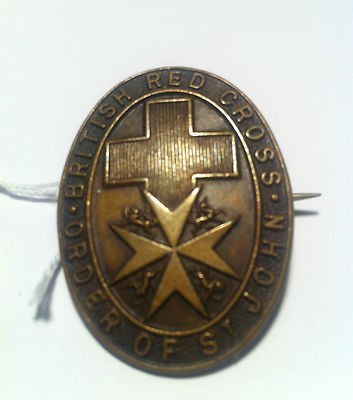Personal Details
Born: 4 January 1899 in Harlesden, Middlesex.
Family: He was the youngest of two children born to George R House, a brewer’s clerk, and his wife Gertrude. No marriage can be identified for Leonard. George was a Quaker and therefore a member of The Society of Friends.
Residence: In 1901 he lived at 104 Rucklidge Avenue, Willesden, Middlesex. The address shown on the Absent Voters’ Register is 26 Wrexham Road, which remained the family address. In 1939 he lived at 95 Wimborne Avenue, Hayes and Harlington, Middlesex. Some time after this he moved to 38 Wrexham Road, Whitchurch, which was his address when he died.
Employment: He was a bank clerk when he left school and in 1939 a bank inspector.
Died: 6 March 1955, aged 56, at Deermoss Hospital, Whitchurch and was buried on 10 March the same year in Whitchurch cemetery. (His mother died one month later and was also buried in Whitchurch cemetery.)
Military Details
Regiment: British Red Cross Society and Order of Saint John of Jerusalem
Rank: Orderly
Service Number: 14514
Date of Enlistment: 23 October 1917
Date of Discharge: 13 February 1919
Reason for Discharge: Left the service of the Friends Ambulance Unit and was demobilised.
Other Information: Leonard was a Quaker and was granted the right to refuse to perform military service on the grounds of conscientious objection at a tribunal in Wisbech, Cambridgeshire in 1917. This was conditional on his joining the Friends Ambulance Unit, which he did and served in the Red Cross Society at home and abroad as a cook. He was granted a permit to be at Dunkirk. His Friends Ambulance Unit personnel card can be found at The Library of the Religious Society of Friends.
Leonard was awarded the Campaign Medals (British War Medal, and Victory Medal).

The British War Medal (also known as 'Squeak') was a silver or bronze medal awarded to officers and men of the British and Imperial Forces who either entered a theatre of war or entered service overseas between 5th August 1914 and 11th November 1918 inclusive. This was later extended to services in Russia, Siberia and some other areas in 1919 and 1920. Approximately 6.5 million British War Medals were issued. Approximately 6.4 million of these were the silver versions of this medal. Around 110,000 of a bronze version were issued mainly to Chinese, Maltese and Indian Labour Corps. The front (obv or obverse) of the medal depicts the head of George V. The recipient's service number, rank, name and unit was impressed on the rim.
The Allied Victory Medal (also known as 'Wilfred') was issued by each of the allies. It was decided that each of the allies should each issue their own bronze victory medal with a similar design, similar equivalent wording and identical ribbon. The British medal was designed by W. McMillan. The front depicts a winged classical figure representing victory. Approximately 5.7 million victory medals were issued. Interestingly, eligibility for this medal was more restrictive and not everyone who received the British War Medal ('Squeak') also received the Victory Medal ('Wilfred'). However, in general, all recipients of 'Wilfred' also received 'Squeak' and all recipients of The 1914 Star or The 1914/1915 Star (also known as 'Pip') also received both 'Squeak' and 'Wilfred'. The recipient's service number, rank, name and unit was impressed on the rim.

